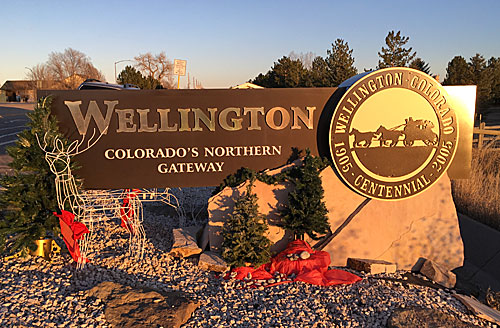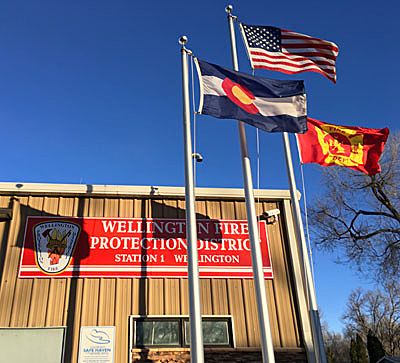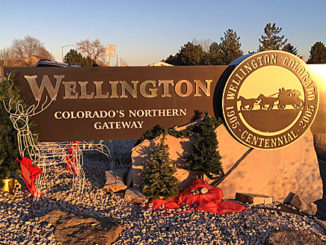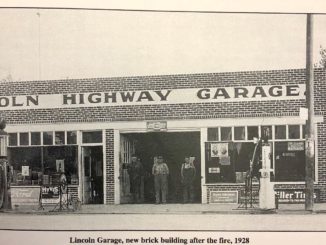
The North Forty News covered some of the problems surrounding the Town of Wellington’s rapid growth and its I-25 interchange at Highway 1 in the November issue. This article looks at how town planning must interface with that of state and federal agencies to insure that rapid growth occurs as efficiently and safely as possible.
Long Nguyen, Traffic & Safety Program Engineer with Colorado’s Department of Transportation (CDOT), emphasizes that the town needs to make sure they get on the long-range plans of the Upper Front Range Regional Transportation Plan (RTP). He forwarded a 42-page PDF of their current plan through 2040. The plan prioritizes various projects (as identified by the public) based on six primary criteria: economic vitality (how the project supports economic development), safety, mobility (more “connectivity” with respect to travel options), Transportation system integrity (how a project interfaces with existing infrastructure), land use, and cost effectiveness.
Wellington Mayor, Tim Singewald, noted that Wellington was more on the RTPs radar some years ago, but since then “no one speaks for the town on a regular basis.” The town plans to address this problem by hiring a Public Works Director in the spring of 2018. This individual would command a staff and someone would regularly attend RTP meetings. As Ed Cannon, the new Town Administrator says, “Wellington eliminated the Director position approximately 8 years ago, but our growth and the complexity of our utility and public infrastructure requires a higher level of strategic oversight and management.” He went on to say, “We need to expand our capabilities to ensure we achieve the long-range goals of the Town.”
One of those goals must be safe and efficient travel to and around Wellington for commuters, residents, visitors and safety equipment—like emergency and fire vehicles. As noted in the November article, the I-25 interchange at Highway 1 is the only quick vehicle access to and across the interstate. Currently, the bridge there exceeds standards necessary for replacement (It ranks a 67% and would have to fall below 50%, according to Nguyen.). Building a second Wellington exit (say, a mile south) would require a relatively long process with both state and federal input—and funding.
However, Nguyen noted that CDOT will be doing work along Cleveland Avenue next spring. When asked about the possibility of a pedestrian bridge across the interstate at Highway 1, he said that he has charged a consultant with seeing if such a project is warranted (based on safety and need) and whether such an addition could be made to that bridge and at what cost.
Mayor Singewald pointed out the “Catch 22” nature of working with the RTP: They would like municipalities to devise plans ten years out so that they will be “shovel ready” if and when funds become available, but if those plans are never implemented, towns and their tax payers are out the planning costs.
Meanwhile, those who provide critical services, such as fire departments often need to look for alternate ways to make do with transportation routes currently available. Wellington District Fire Chief, Gary Green, was gratified at the results of the last election in which voters passed a mil levy increase by a nearly two to one margin. This will allow the department to build and staff another fire station on property they have already set aside on the east side of the interstate. Green estimates that could be built in the next 3-5 years. Such a station could reach property east of the interstate more easily if the Highway 1 interchange was blocked for any reason. Money from the mil levy will also help them maintain a paid staff—especially if their current FEMA grant is not renewed. They also expect to make improvements to service by 2019 that will change their ISO rating from 3 to 2 and thus lower homeowner insurance costs.

The fire district also owns property near CR 82 that will help extend service to the north as needed. The Wellington Fire District covers 288 square miles from CR 58 to the Wyoming border and from the Weld County line to US Highway 287. Green noted that more people are buying acreages in rural areas north of Wellington. The fire district must also service the Red Mountain and Soapstone Natural Areas, although there have been few calls there so far.
Singewald mentioned that five board positions will be open this coming April. Any Wellington citizens who want a personal voice in how their town manages its growth are welcome to apply or cast their vote for someone who shares their vision for the future.
Support Northern Colorado Journalism
Show your support for North Forty News by helping us produce more content. It's a kind and simple gesture that will help us continue to bring more content to you.
BONUS - Donors get a link in their receipt to sign up for our once-per-week instant text messaging alert. Get your e-copy of North Forty News the moment it is released!
Click to Donate



